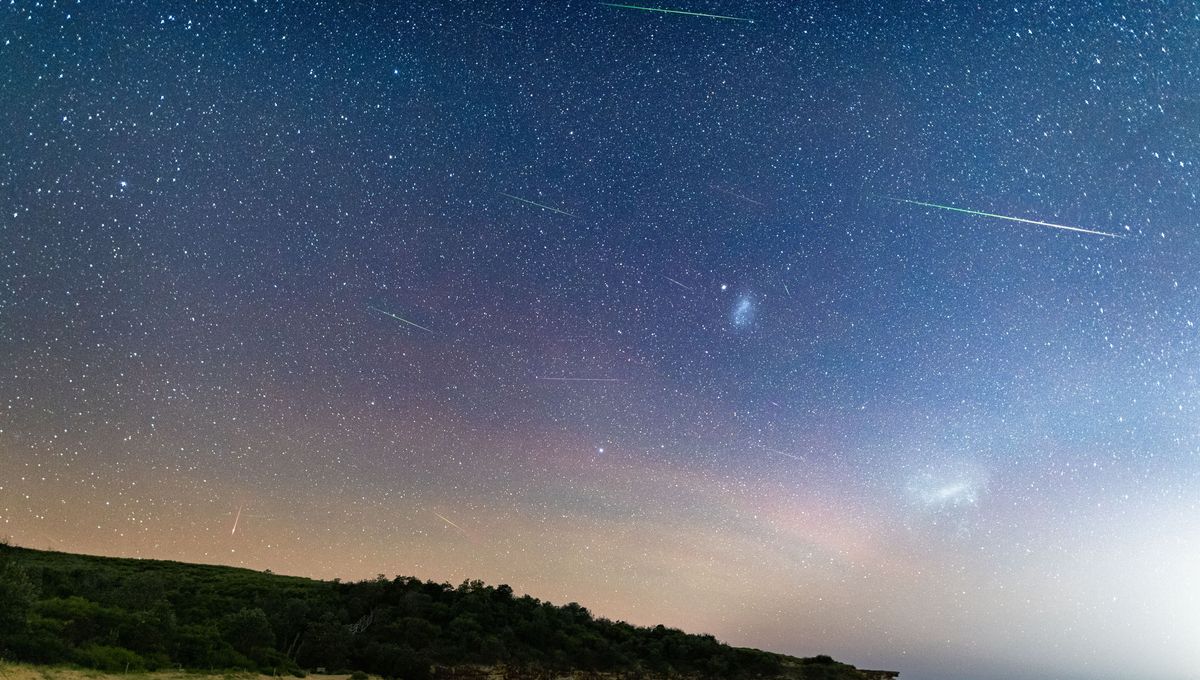
Earth is currently experiencing one of its top three meteor showers in terms of activity. May is the month of the Eta Aquariids, leftover pieces from the passage of Halley’s comet. Earth gets as close to 9.7 million kilometers (6 million miles) from the comet’s orbit during this time, close enough to capture some stray dust left over in its wake.
The Eta Aquariids can show at a rate of up to one meteor a minute, but this intensity is only experienced by people around the equator and southern tropics. For everyone else on the planet, a more modest but very respectable rate of 10 to 30 meteors per hour is to be expected. The best time in the Northern Hemisphere is before dawn with the sky at its darkest (so away from cities). In the Southern Hemisphere, the middle of the night is good too.
It takes about 30 minutes for your eyes to adjust, so take that into consideration. The meteor shower is quite long, from April 19 until May 28 each year. The peak this year is expected on the night between May 5 and 6, but throughout that week there is a good chance to see many meteors.
Our orbit gets close to the orbit of Halley’s comet twice a year. In May this leads to this meteor shower. Then in October, the debris makes up the Orionid meteor shower. Eta Aquariids have this name because they radiate from the star Eta Aquarii.
Halley’s comet is quite bright, and it has a relatively short period, going around the sun in 76 years. Humans have been observing it for over 2,250 years. The first confirmed observation dates to 240 BCE; it was featured in the Book of Han by Chinese astronomers in 12 BCE. In 1066 it was featured in both the Bayeux Tapestry – the chronicle of the Norman Conquest of England – and in petroglyphs carved by the Chaco, native Americans in modern-day New Mexico.
Its apparition in 1301 inspired Giotto di Bondone to represent the Star of Bethlehem as a comet, influencing its depiction for the following seven centuries. Despite millennia of observations, it was only in 1705 that its periodicity was discovered by Edmond Halley.
The last time that it was seen from Earth was in 1986 and it will be back in the inner Solar System again in 2061. It is, in fact, on its way back as we speak, having reached its farthest point from the Sun last December.
Source Link: Eta Aquariids Are Striking Through The Sky This Month – Here’s When The Shower Peaks